The Houston Space Center is something I’ve wanted to visit for a while. I’m a big fan of orbital space junk (which sounds weird now that I write it), so it was cool to have the chance to learn more about space in general!
Arriving in to the car park for the center, you can already see the actual NASA 905 shuttle carrier aircraft, with the replica Independence shuttle on top.
Entering the lobby of the space center, you’re overwhelmed with choices. Lots of exhibits branch off from this huge central hall. We decided to start off our trip by watching a movie on the history of space exploration, before moving in to the Starship Gallery.
The Mercury missions took place prior to Gemini, and using single-occupancy capsules. It was the first human spaceflight program of the United States, running from 1958 to 1963. In total 7 American astronauts were planned to be sent up (Scott Carpenter, Gordon Cooper, John Glenn, Gus Grissom, Wally Schirra, Alan Shepard, and Deke Slayton), one at a time. These astronauts are referred to as the Mercury Seven (or the Original Seven) for being the first 7 American Astronauts. Because of these 7, each Mercury mission had a nickname provided by the piloting astronaut alongside the number 7.
Despite being the Mercury Seven, only 6 of the astronauts made it in to space as part of Project Mercury. Due to a heart condition, Deke Slayton’s mission was initially pushed back, before he was grounded altogether. In response he improved his fitness, gave up smoking/cut down on drinking, and tried various new medications. Eventually he was cleared for non-solo missions, and flew as part of the Apollo–Soyuz Test Project in 1975. He was by this point 51 years old, making him at the time the oldest astronaut to fly in space.
Mercury 9 was the final mission of Project Mercury, with this capsule being flown by Gordon Cooper. The capsules flown during the Mercury missions were infamously small (hence being referred to as capsules). John Glenn once commented that “You don’t climb into the Mercury spacecraft, you put it on”. Still, Cooper spent over 34 hours in flight in Mercury 9, orbiting the Earth 22.5 times. This set a new record for the longest space flight by an American.
This exhibit is the Gemini V capsule, on loan from the Smithsonian National Air and Space Museum. Gemini V was the third manned flight of Project Gemini (named because the spacecraft carried two astronauts). Project Gemini took place from 1965-1966, and flew 10 crew pairs.
Gemini V was the 11th manned American spaceflight, and the 19th human spaceflight overall. It was significant because of its duration: just shy of 8 days. This was 3 days longer than the previous record, held by the Soviets. It was in fact the first time an American spacecraft had broken the duration record. The successful test of an 8 day mission was key for the space race, as 8 days is how long it would take to get to the moon, land, perform tests, then return.
The astronauts on this successful mission, Charles “Pete” Conrad and Gordon Cooper, later referred to it as being “8 days in a garbage can”. Circling the Earth 120 times during the flight, the astronauts commented that they wished they’d had some books to pass the time. The two-man team took various high resolution photographs of the Earth during their flight, but other planned tests had to be cancelled due to problems with fuel cells and maneuvering systems.
During the Gemini missions, NASA began a tradition of playing music to astronauts. This later expanded to using music as a wake-up call in Apollo 15. Music is often chosen by the families of astronauts as songs which have special meaning to them. Reportedly Dean Martin’s “Going Back to Houston” was a popular choice. However, it wasn’t just NASA bringing the music. During Gemini VI (back in December 1965), astronauts Wally Schirra and Tom Stafford made a call to Earth that they had spotted something unusual; an unknown object, travelling from north to south, probably on a polar orbit. They then proceeded to play Jingle Bells using a smuggled harmonica. The audio can be heard below:
The Lunar Test Article 8 (LTA-8).
The LTA-8 was used for training astronauts on the process of moving from a lunar orbiter to the surface. Training was conducted in a thermal vacuum chamber to mimic the extreme temperatures and lack of atmosphere in space. It could be used to help practice both ascent and descent phases of a lunar visit, as well as ingress and egress on the lunar surface. This module, constructed in 1965, has seen extensive use. The museum cites it as being used in the training of astronauts on Apollo 9, 11 (the first lunar landing), and 15.
As with the other capsules, this exhibit is the actual module that was flown. Apollo 17 was the final Apollo mission to the moon, flown by Eugene Cernan and Harrison “Jack” Schmitt, and using the Challenger lunar lander. This particular command module has been dubbed “America”. This was actually Cernan’s second space flight, having previously flown on the lunar orbit/return mission Apollo 10. Cernan and Schmitt are the last two astronauts to have been to the moon.
The two astronauts touched down in an area of the moon known as Taurus–Littrow. Here they spent 75 hours on the surface of the moon, travelling 30.5km in the lunar rover, setting up a new automated research station, and collecting 110kg of samples to bring back to Earth.
Lunar rovers were sent to the moon (and left there) on the final three Apollo missions. The vehicle seen here was used in the training of the astronauts that flew these missions. Dave Scott (Apollo 15), Jim Irwin (Apollo 15), John Young (Apollo 16), Charlie Duke (Apollo 16), Gene Cernan (Apollo 17) and Harrison Schmitt (Apollo 17) all trained on it.
The lunar rovers are quite different to your traditional car. There’s no brake peddles or steering wheel. A single control is used, mounted between the two seats. The rovers can travel at speeds of up to 15kmph, and have a range of just shy of 90km. Rovers are covered in various cameras to capture the mission, and have been used as inspiration when designing future unmanned probes such as Spirit, Opportunity and Curiosity.
Skylab was the first space station launched and operated by NASA, and the only one to have been exclusively operated by the US. It was launched in early May 1973, was manned for 24 weeks between May 1973 and February 1974, and reentered in July 1979. The space station was crewed by 3 people at a time, and had 3 crews over its duration.
Skylab was the stage of the only ever space mutiny. Astronauts were given no recreational time due to the $22.4 million per day operational costs. The crew of Skylab 4 (SL-4), the third and final mission, were Gerald P. Carr, Edward G. Gibson, and William R. Pogue. With each mission, the duration of the stay was extended. SL-2 spend 28 days, SL-3 spent 59, and SL-4 spent 84 days. The crew were said to be falling behind on their workloads when 6 weeks in to their mission (28th December 1973), they declared that they were on strike. All communications with ground control ceased. The crew spent the day relaxing, and looking out of the windows. This event is said to have led to NASA taking workplace stresses in to more consideration when planning future missions.
The Skylab 1-G Trainer, created out of the final stage of a Saturn V rocket, was used to train astronauts prior to deployment to Skylab. This training facility is so large that part of the facility had to be built around it. Visitors to the space center are able to walk through the orbital workshop’s training module.
Also on display here is a small piece of debris of Skylab. Most of the station burned up on reentry into the Earth’s atmosphere (as planned), but some pieces did survive. A small piece of a structural beam can be seen, recovered from a beach in Esperance, Australia.
Samples of lunar rock and regolith have been brought back from six different Apollo missions. A small amount of this collection is visible here- Missions have in total yielded a massive 272kg of samples. One of the rocks can be touched here, making it one of only 8 in the world which can be touched by tourists.
NASA’s lunar rock sample holdings actually have a quite interesting history. NASA employs many interns, one of whom was 25 year old Thad Roberts back in the early 2000s. With the help of two other interns (Tiffany Fowler and Shae Saur), Roberts made a plan. One night after dark they paid a visit to Building 31, where the lunar sample collection was held. They were waved in by security staff who recognised them. They were able to interfere with the CCTV system of the building, and enter the storage area using a code which had unwittingly been provided by another colleague. The lunar samples were kept in a room devoid of oxygen to help preserve them, and so they brought wetsuits with oxygen tanks. By examining fingerprints on door access panels, access codes were bypassed.
The samples were stored in a safe. With limited time available due to the use of oxygen tasks, Roberts was not able to gain entry. So, the team unbolted and dragged the entire safe out with them. It took NASA two days to notice that the safe was missing, and none of the trio involved in the crime were put on the suspects list. The safe stolen by Roberts contained samples which had previously been examined. Once a lunar rock has been tested, it is considered unclean, unsuitable for further studying. The fresh rocks would reportedly have been easier to take, but Roberts saw little harm in stealing these already tainted samples.
Now that he had the rocks, what did Roberts do with them? First up, him and Fowler reportedly had sex on a pile of the samples. Next, he had his friend (Gordon McWhorter) attempt to sell the rocks online. He found himself in contact with an amateur mineralogist called Axel Emmermann. Alerted by the suspiciously low price, Emmermann contacted the FBI. When Roberts arranged to meet Emmermann, he instead met an undercover FBI agent.
Roberts received 100 months of prison time, whereas the girls were only put on probation. McWhorter’s sentence was said to be almost as severe as Roberts’. During his time in prison, Roberts wrote a book called Einstein’s Intuition: Visualizing an Eleven-Dimensional Framework of Nature, An Introduction to Quantum Space Theory. He is now a theoretical physicist for a private think tank, and a public speaker who encourages others to chase their dreams.
NASA 905

Moving on, we headed to Independence Plaza to see the NASA 905 shuttle carrier aircraft. Painted on the side of it, we can see what it has been used to transport.
On top sits Independence (formerly known as Explorer), a high-fidelity replica space shuttle. Part of the shuttle’s journey to Houston required it to travel by river barge, which Wikipedia has a great photo of:
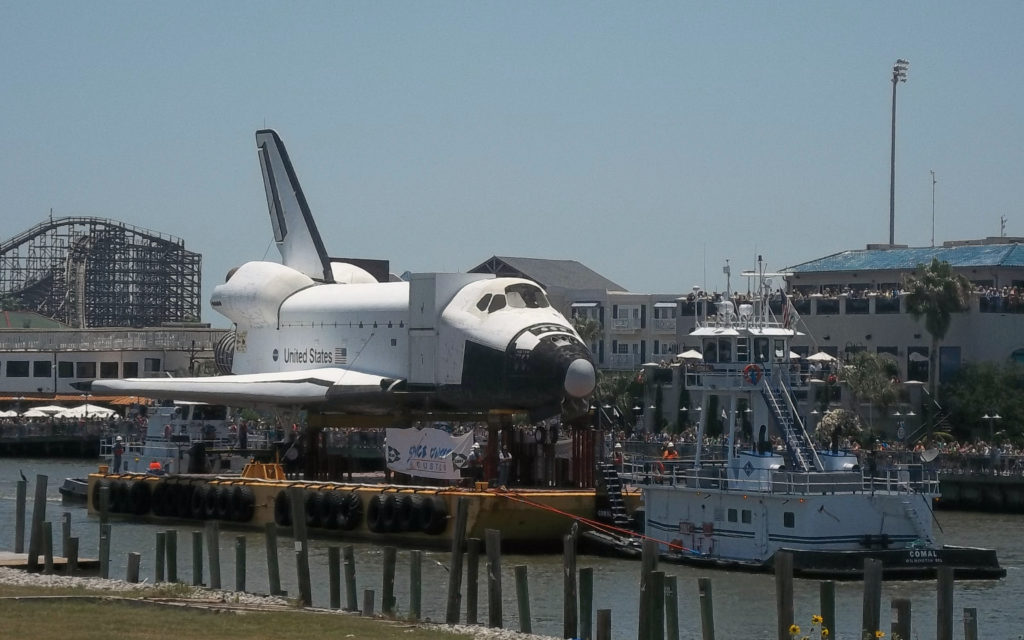
Alongside the shuttle/carrier is a set of stairs and an elevator, allowing people to enter the NASA 905 carrier/the shuttle.
The inside of the carrier is tailored towards education (especially on encouraging kids to dream of being astronauts). It also contains a lot of small exhibits. One that I found interesting was a video history of the development of the carrier. Previously, large structures had to be transported by road (various clips showing how street lights and road signs would have to be temporarily removed to facilitate this can be seen). It was proposed that an aircraft could be used to transport spacecraft, but the idea was shot down as facetious. John Kiker, with the help of fellow model aviation enthusiast Owen Morris created 1/40th scale remote control models, and learned to fly/land them. This proved that the technique worked in principle, and paved the way for the development of the carrier.
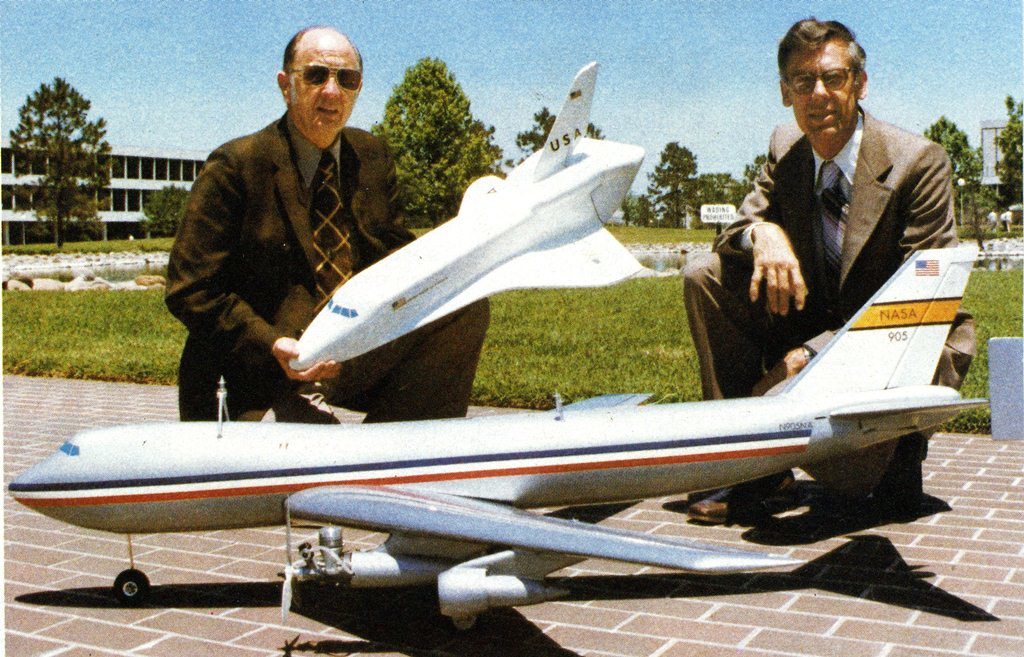
The carrier contains various hands-on exhibits to play with. This includes a heat gun pointed at a nose cone tile which lets you feel how well it blocks the heat, and model craft in a miniature wind tunnel.
Space Shuttle Independence
Just up the stairs from the carrier is the shuttle. Looking at the nose of the shuttle, lots of individual tiles can be seen.
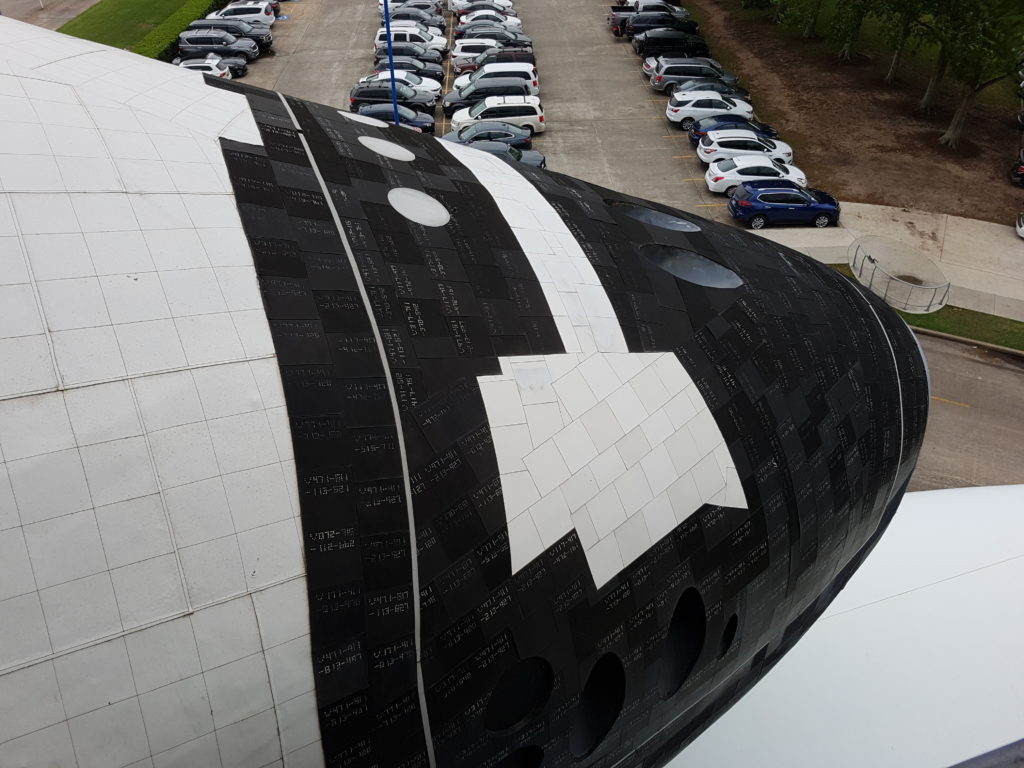
These tiles make up part of the Space Shuttle thermal protection system (TPS), designed to withstand the 1,650 °C temperatures reached during reentry. Various different materials are used depending on their position on the shuttle. In the nose cap, reinforced carbon–carbon tiles are used to withstand these peak temperatures. Looking at the above photo, lots of small numbers can be seen on the tiles. Each tile carries a identification number, which tells of its batch number and location on the spacecraft. This number can be used to look up the exact tiles position and metrics, facilitating the creation of identical parts as needed.
Inside of the shuttle is the satellite motor cradle which flew aboard the STS-49, the maiden flight of the Space Shuttle Endeavor, back in May 1992. The gold foil covers the satellite cradle, and the black plastic covers the satellite motor itself. This motor was used to relaunch the Intelsat 11, which had previously failed to reach its correct orbit.
The primary purpose of the STS-49 mission was to capture the satellite, attach the new motor, then relaunch it. After several unsuccessful attempts, the astronauts were able to successfully capture it. To accomplish this the only 3 person spacewalk in history occurred. This spacewalk also held the record for the longest spacewalk (also known as extra-vehicular activity) with a time of 8 hours 29 minutes, until the crew of STS-102 broke the record in 2001 with a spacewalk of 8 hours 56 minutes.
Also within the shuttle, various bits and pieces of space life can be learned about. Ever wanted to see a space toilet? NASA has got you covered.
An astronaut sleeping bag can be seen, strapped to the wall as it would be during use so that the sleeping astronaut doesn’t float around.
An airlock used for spacewalks (as well as a mock-up space suit) can be seen.
Mission Control Center
From the main museum, transportation can be taken to see other sites of interest. We decided to go see the Christopher C. Kraft Jr. Mission Control Center in Building 30. Getting to the building itself was interesting. During the electric tram ride, we learned more about the site. It was designed so that if the space program was discontinued, it would be suitable for use as a university campus.
The site itself is littered with bicycles. These are free to use for staff working on-site, and the tour-guide remarked that you can tell when there’s a lot of activity going on in a building by the numbers of bicycles dumped outside. We were also able to see some deer on the site, as well as the world’s coolest parking spot marker.
Upon arrival at mission control, we were told that we had to keep quiet because the building is in active use. In the lobby of the building was an exhibit on various old computer systems that have been used within mission control rooms.
From here, we were taken upstairs to a gallery overlooking the active Mission Control Room.
The room that we observed is called FCR 1. This room is frequently remodeled, with the most recent upgrade having been the MCC-21 upgrade. Our tour guide told us about how mission control functions- the various different roles, and how they communicate. We learned about how people can be trained to enter this room, and about how numerous simulated mission crises are done to prepare the staff for every eventuality in real missions.
Rocket Park
After seeing mission control, we took the NASA tram to Rocket Park. This site features various rockets, but most impressively, a huge warehouse which houses a Saturn V rocket.
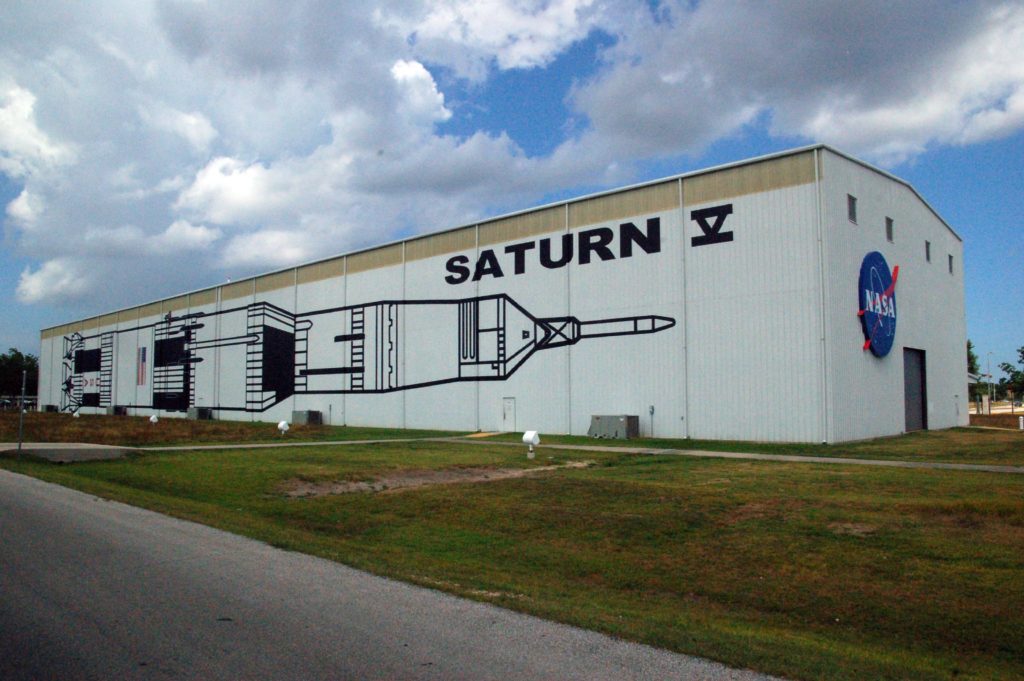
One of the larger items here is the Mercury-Redstone Launch Vehicle, used during Project Mercury:
Also to be seen here is the Little Joe II rocket (used for 5 unmanned tests of the Apollo spacecraft launch escape system (LES)):
Various engines are dotted around.
To the left is a multi-purpose engine. One such engine was used on the second stage of the Saturn IB launch vehicle, while another powered the S-IVB third stage, and a cluster of 5 powered the S-II second stage of the Saturn V launch vehicle. The central grey engine is one of the style used in the first stage of the Saturn V launch vehicle. To the right of the image is the base of the Mercury-Redstone Launch Vehicle.
Also seen here is the H-1 engine, used as a cluster of 8 on the Saturn I and Saturn IB rockets. The H-1 engine is an evolution of the engines used in Jupiter ballistic missiles.
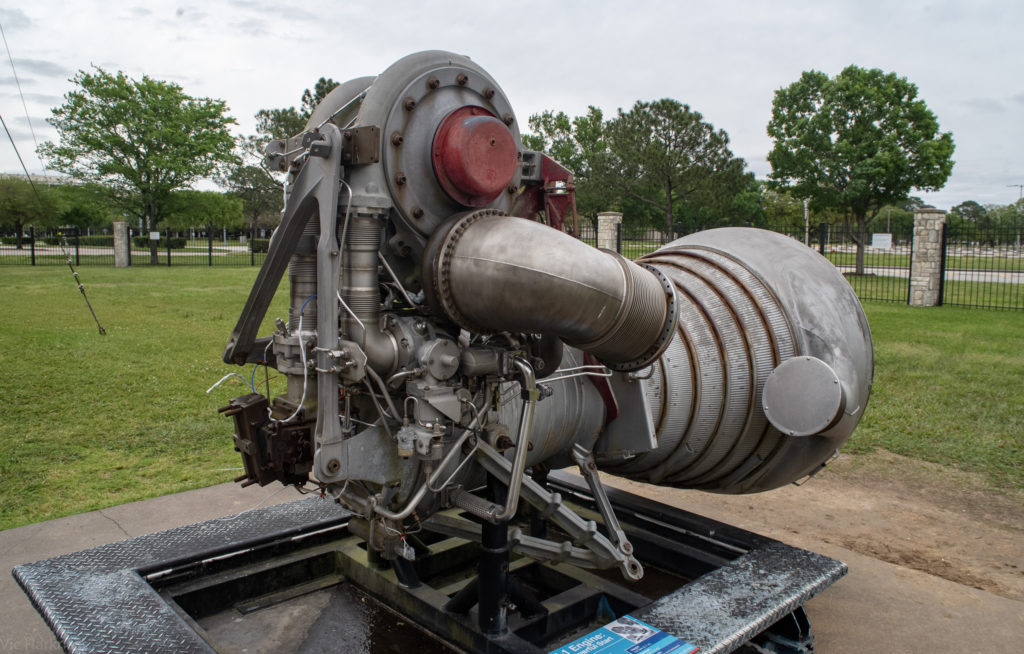
The J-2 engine seen here is used within stages 2 and 3 of the Saturn V rocket.
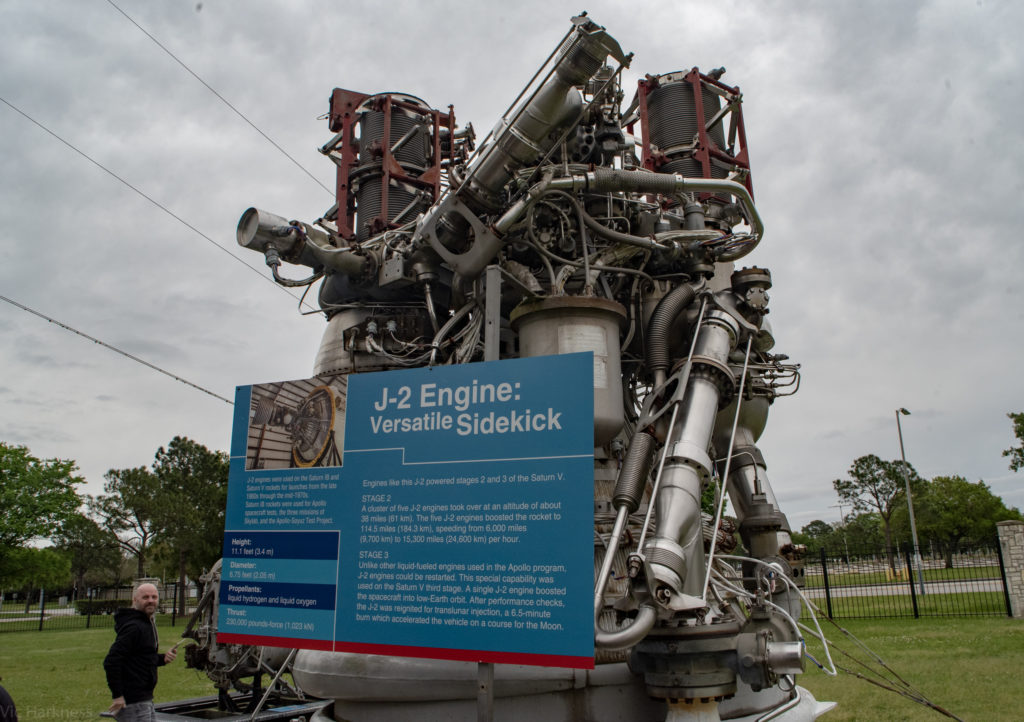
After looking around these engines (and a few others), we headed in to the Saturn V warehouse.
The Saturn V rocket was my favorite thing that I saw on the entire trip. Photos and words cannot convey the enormity of this rocket. Entering at the base end of the warehouse, you are immediately confronted with the huge 5 Rocketdyne F-1 engines of the first stage (designated S-IC).
Each of these engines is 3.7m in diameter, weighing 8,400kg. The central rocket is stationary, whilst the four outer ones can tilt to provide some steer to the rocket. I’d seriously recommend visiting the Houston Space Center just to see the enormity of these engines!
After a brisk walk (the first stage alone is 42.1m long), we reach the second stage (S-II).
This section uses 5 Rocketdyne J-2 engines, each only 2.1 meters in diameter and weighing 1,788kg. After walking the 24.8m length of this section, we reach the third stage of the Saturn V rocket (S-IC).
This section features a lone Rocketdyne J-2 engine, and stands at 18.8m in length.
Looking back on the entirety of the rocket is amazing. I’m completely in awe of just how huge it is.
The rocket totals to 110m in length. To provide scale, this makes it almost as tall as the internationally famous Salisbury cathedral spire, which stands at 123m tall.
The walls of the massive warehouse are also used. They are lined with information on the Apollo missions (being the missions that Saturn V was used for).
This included a quote I quite liked from Eugene A. Cernan: “That last footprint on the moon? Check it out. It’s my boot size.” During the Apollo 17 mission he became both the 11th person to walk on the surface of the moon, and the last person to have done so to date.
Astronaut Gallery
After our visit to the Rocket Park, it was back to the main building. Here we visited the Astronaut Gallery, where we saw lots of pieces of astronaut gear. This varied from things you’d expect:
To the more casual gear:
The above shirt was warn by Dick Covey on Discovery in 1988.
We also saw exhibits on the damage that can be done by space junk (a pet subject of mine).
If you’d like to learn more about the problem and what’s being done to address it (or are just feeling particularly masochistic), I suggest that you look at my ramblings here:
The problem with space junk: What is the problem?
The problem with space junk: What can we do about it?
At what point do we just call it space vandalism?
The problem with space junk: Where are they now?
The problem with space junk: What’s new?
As we had quite a bit of driving ahead of us, we decided to end our visit at this point.
I’d very much recommend visiting the Houston Space Center if you get the chance, and making sure to see the Saturn V rocket! I’d also recommend visiting earlier in the day- we arrived first thing in the morning, when things were pretty sedate. By the time we were leaving, the place was very busy with extensive queues for everything.
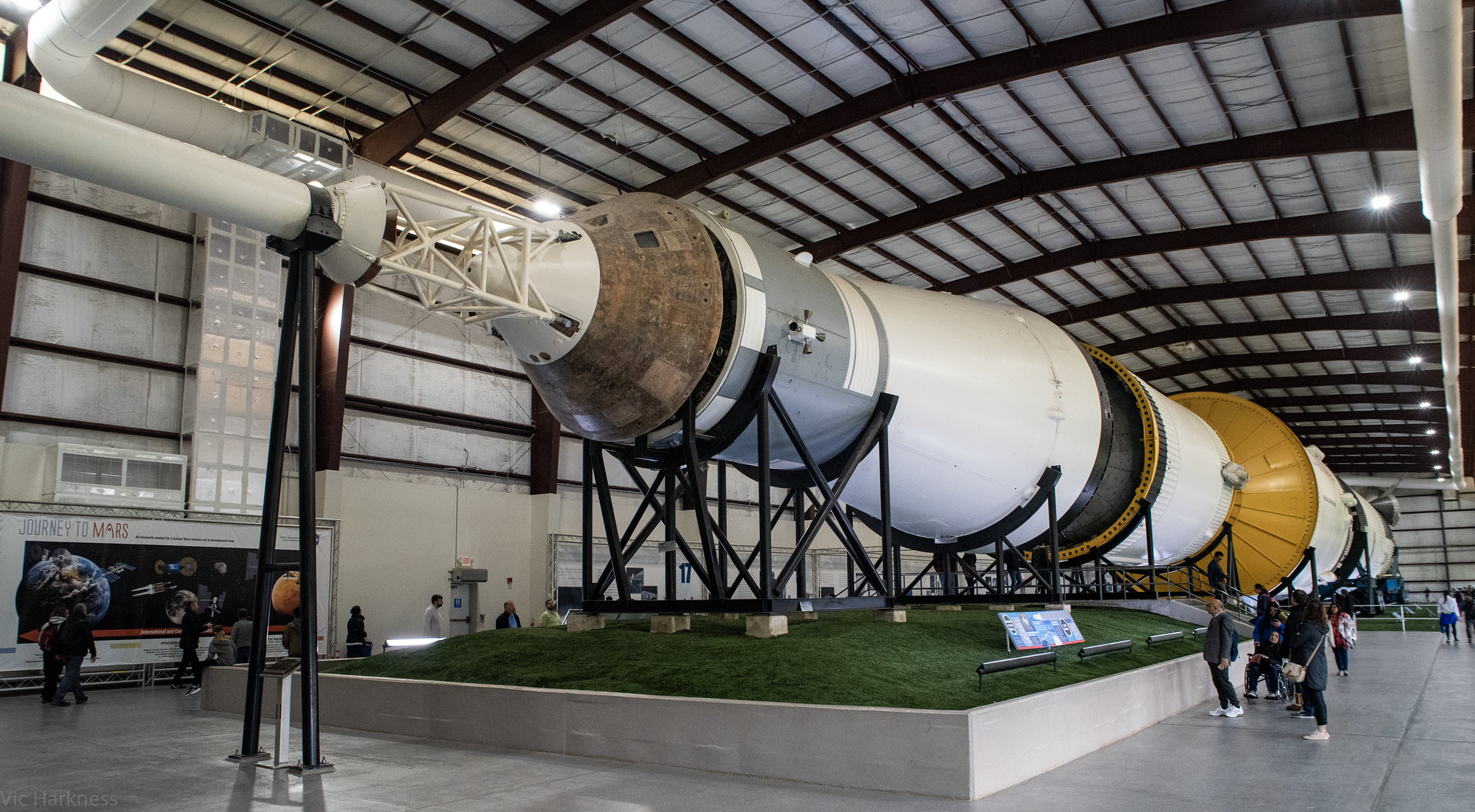



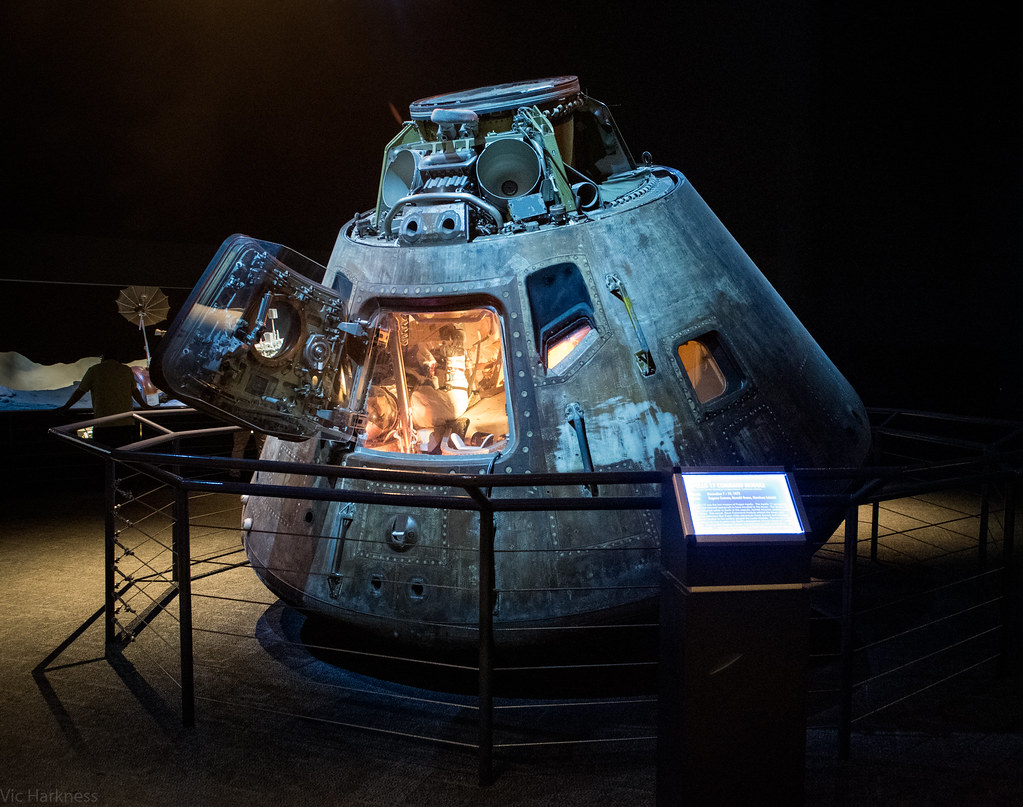

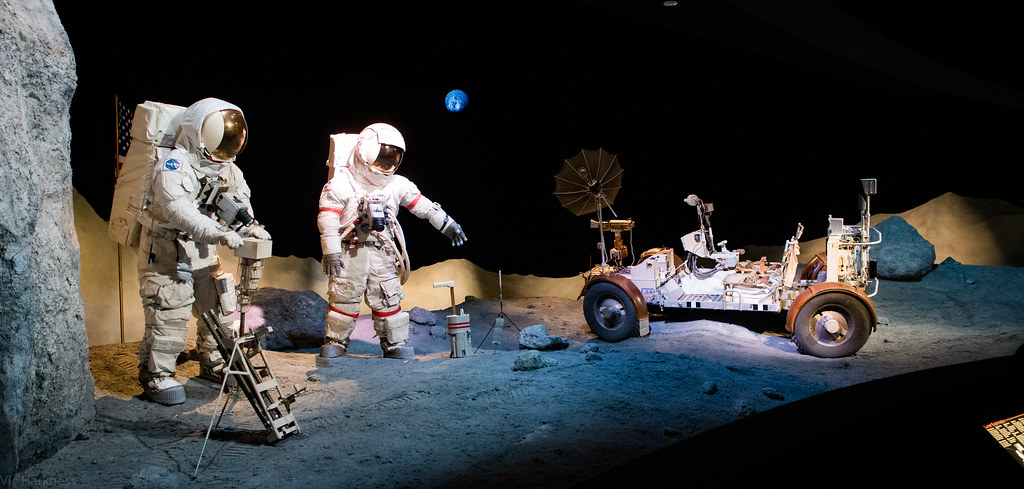


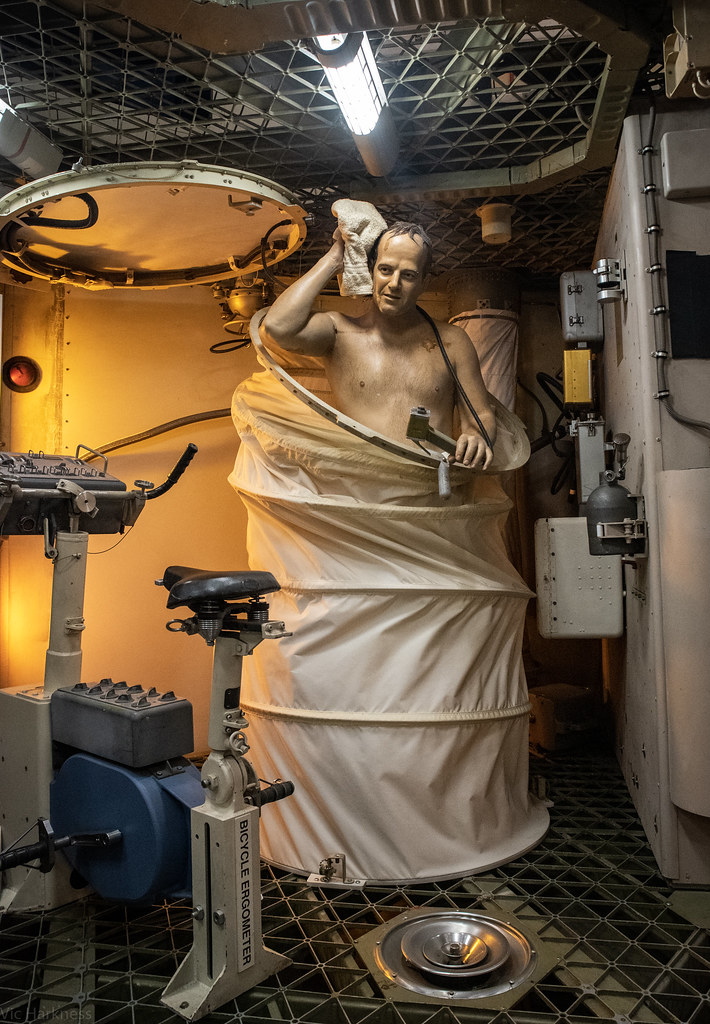
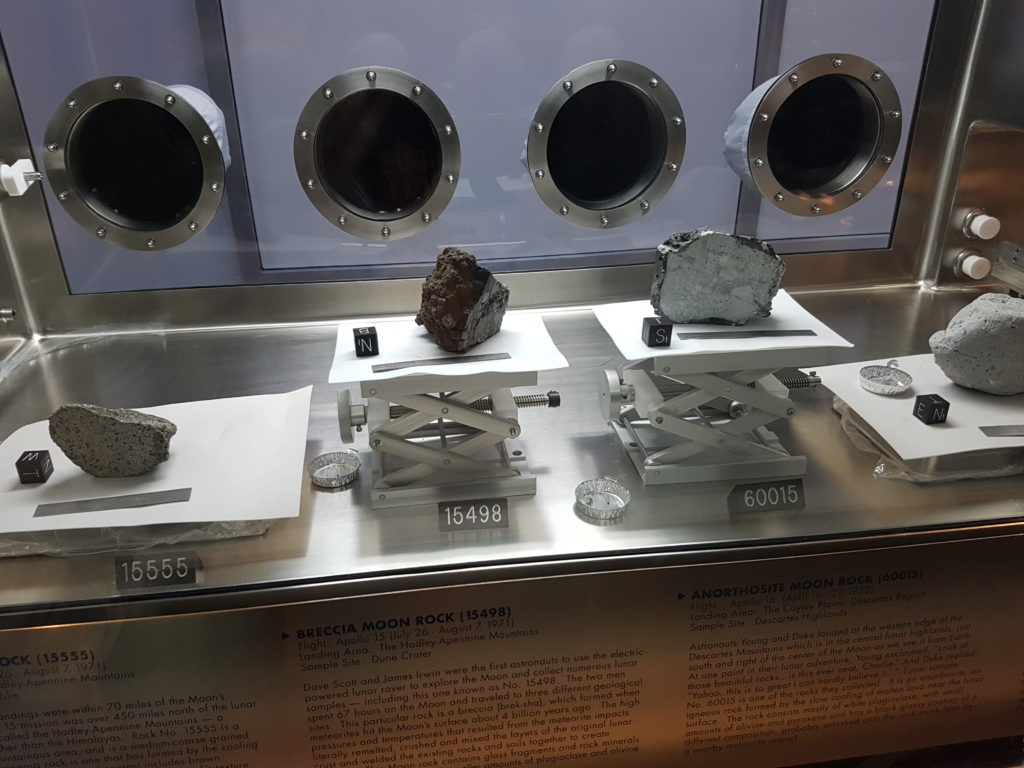
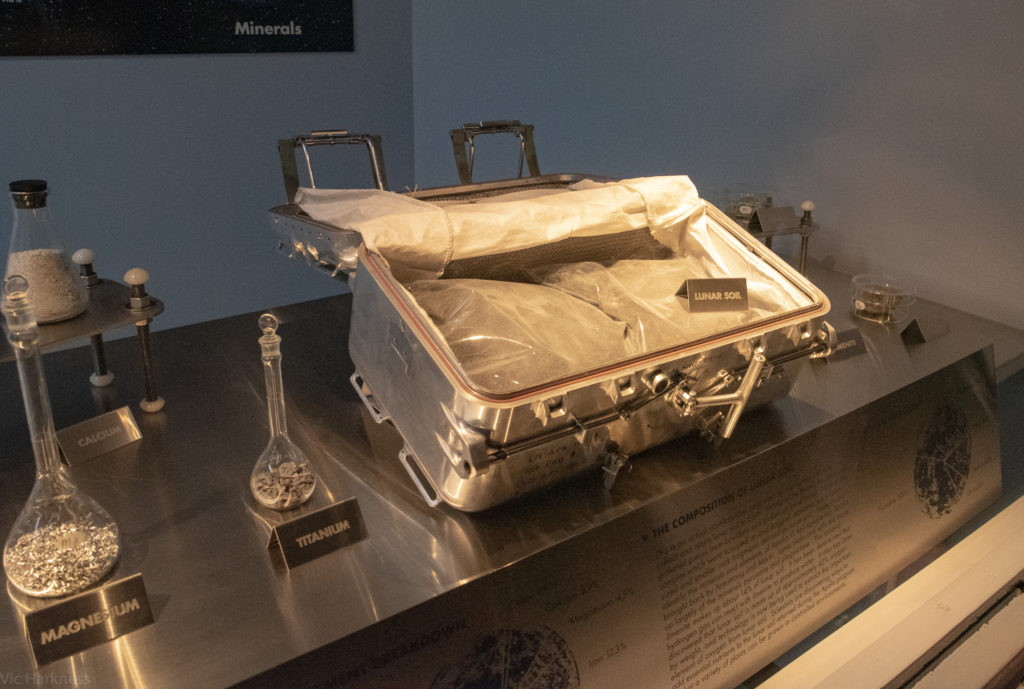
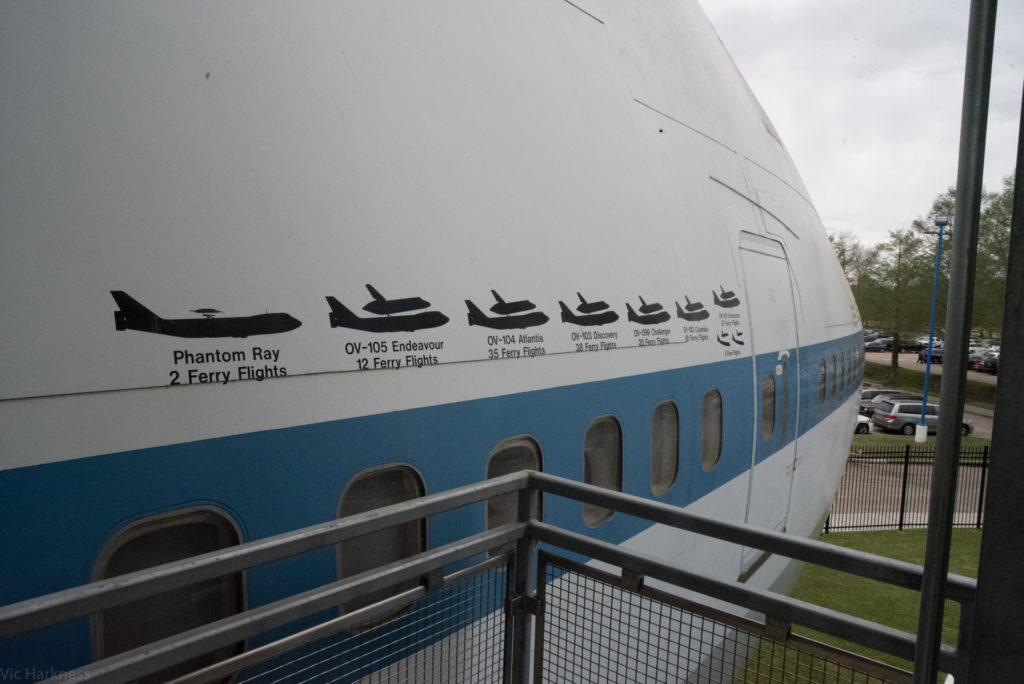
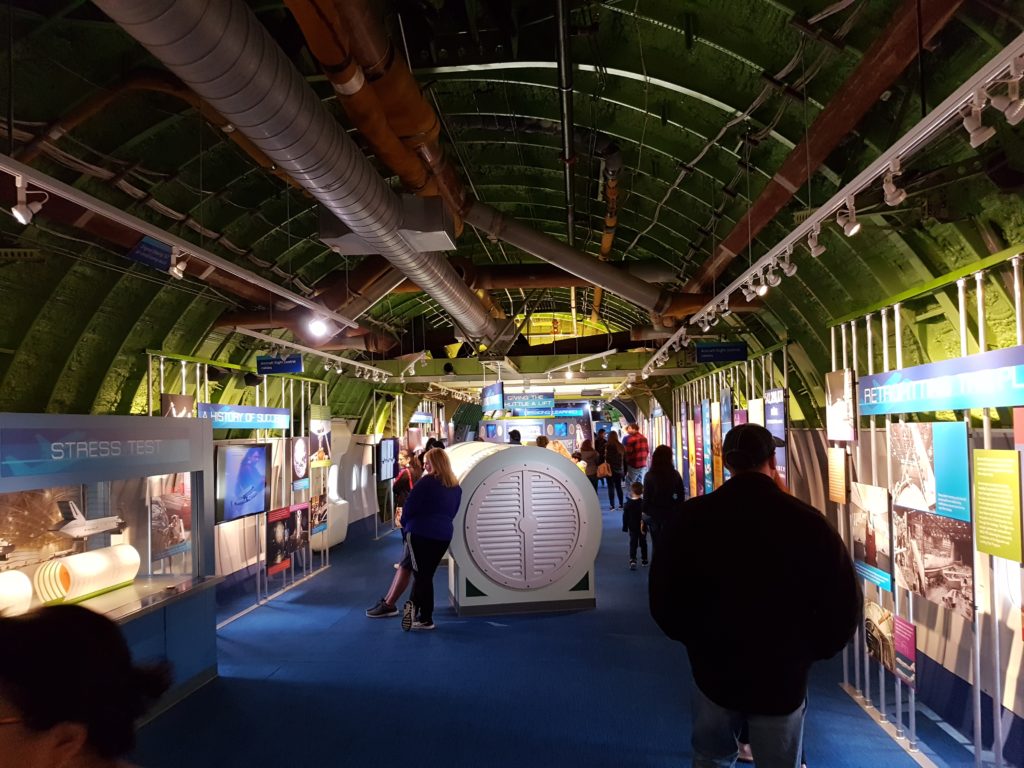
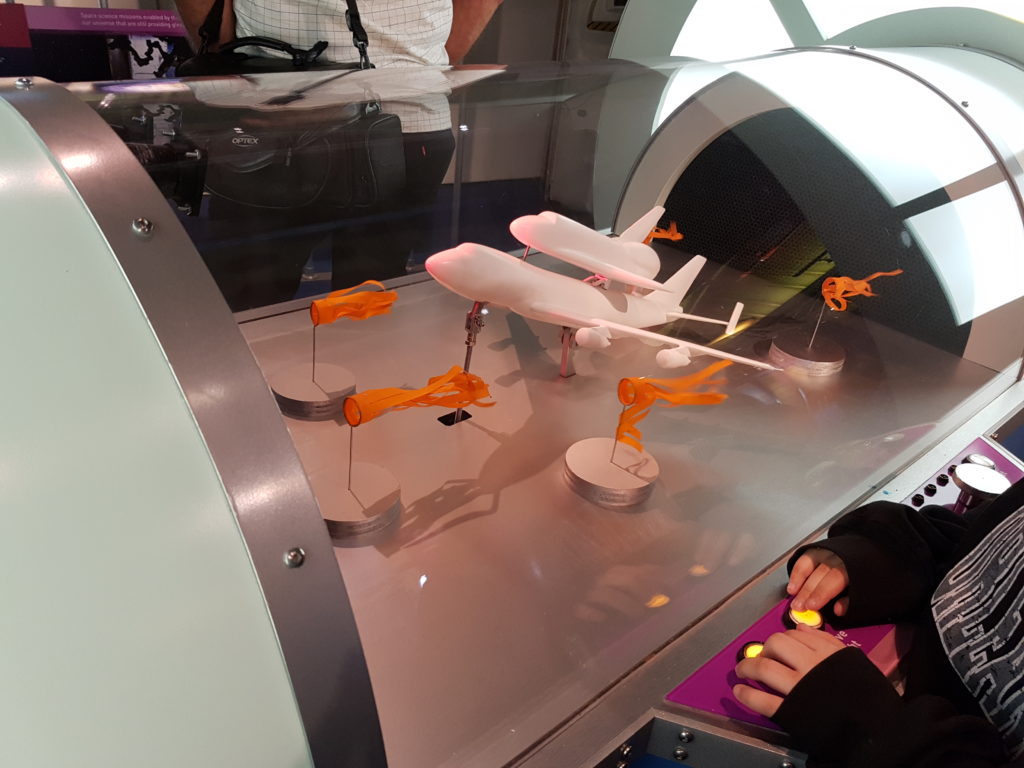

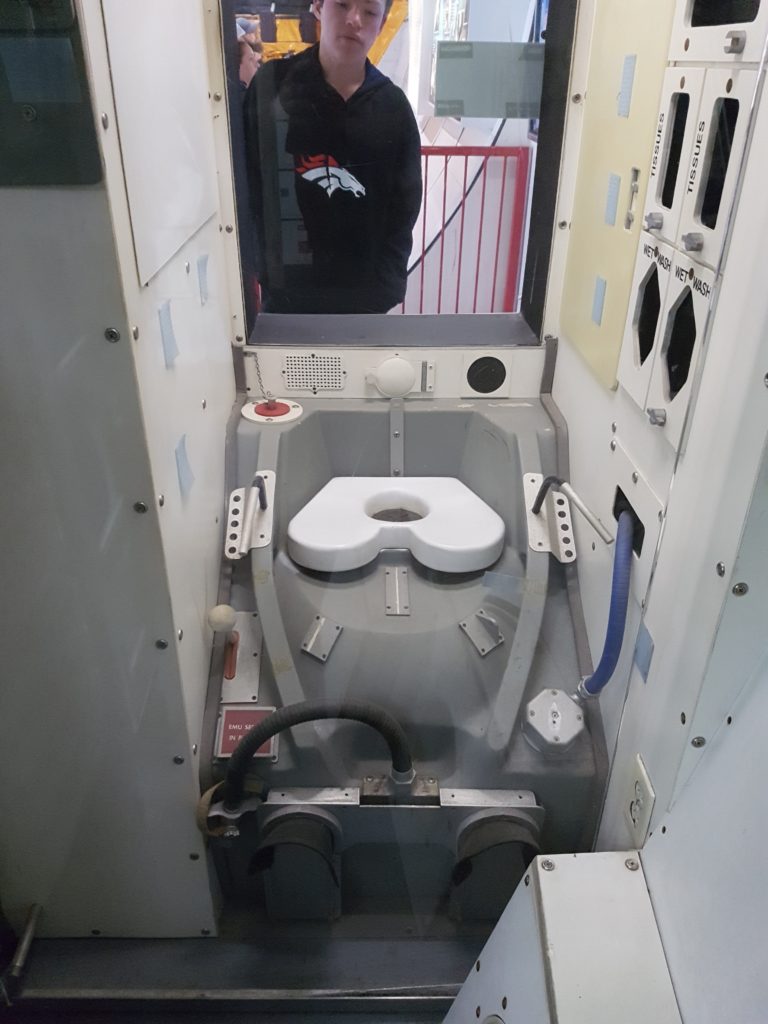
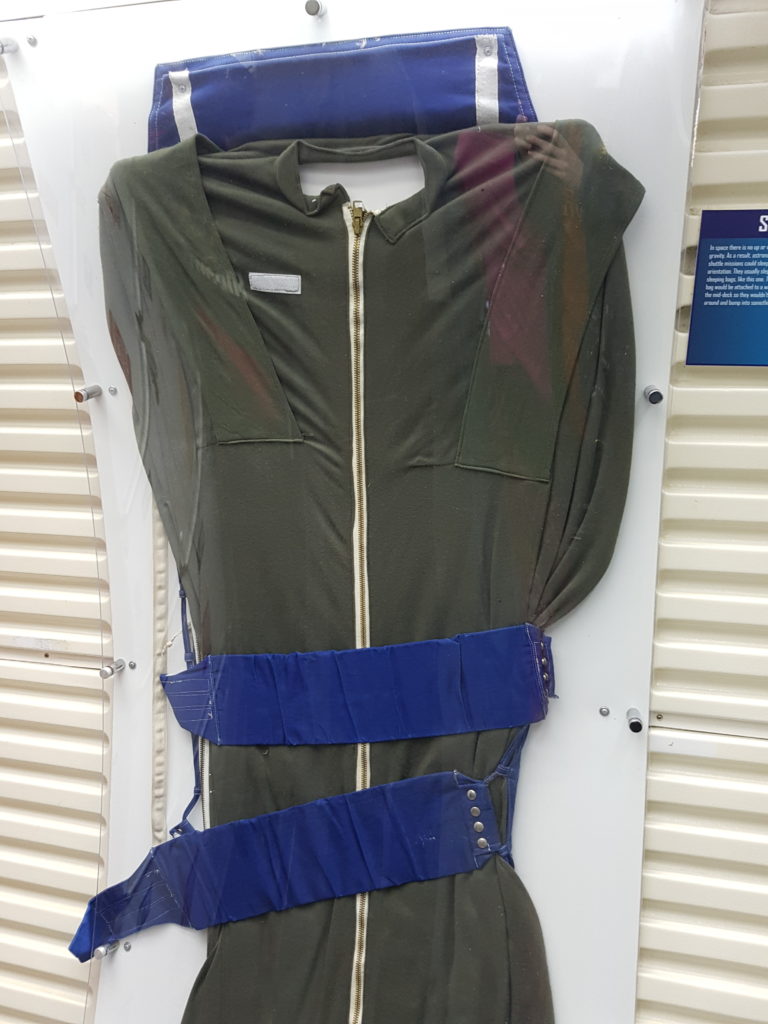

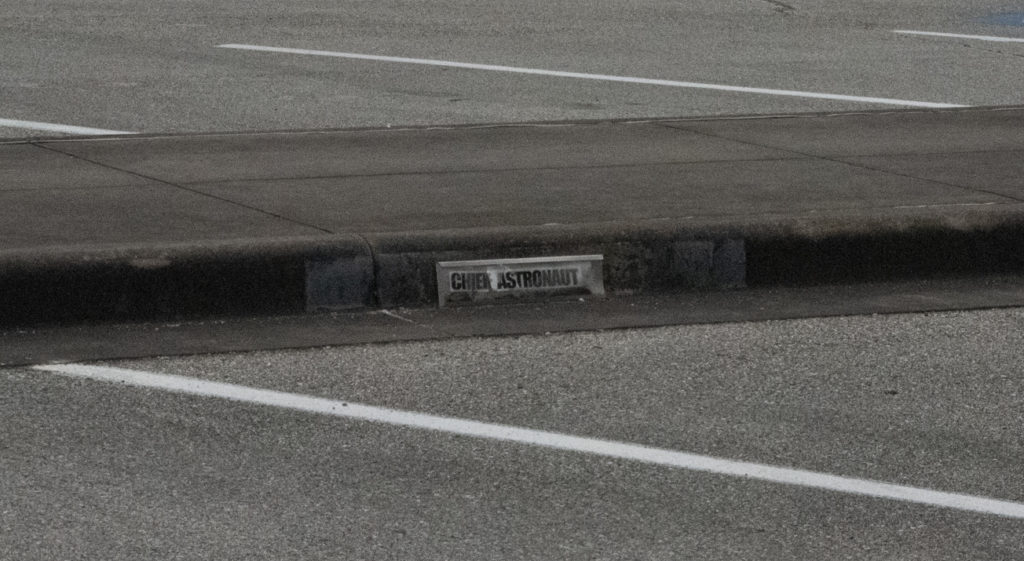
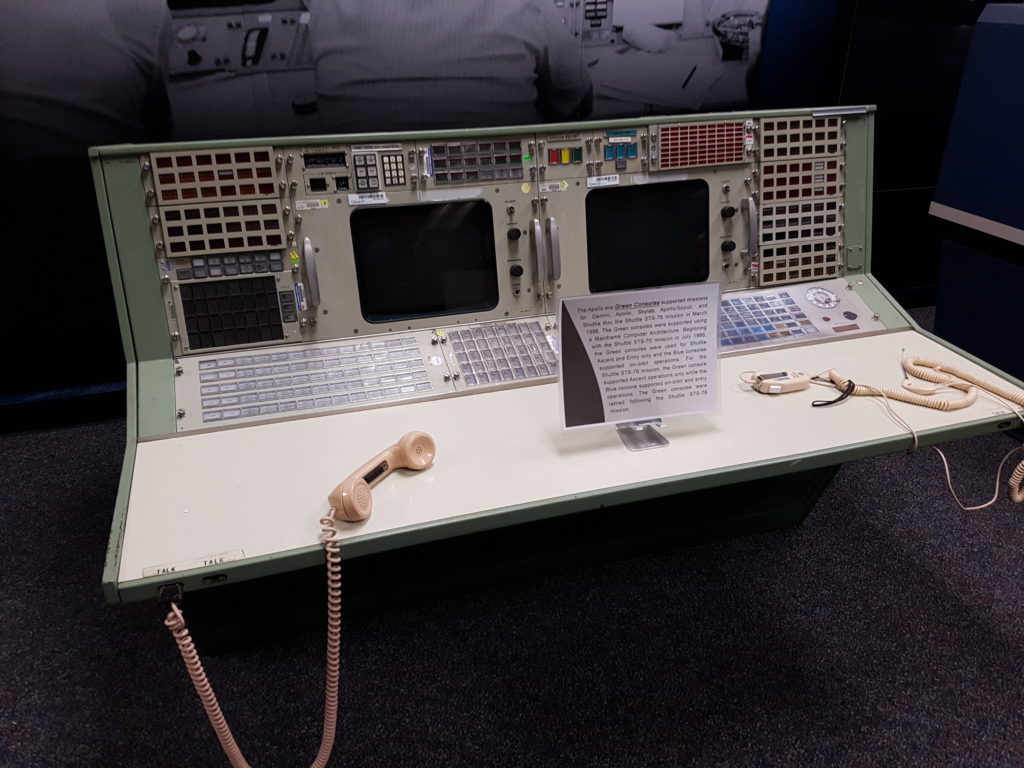
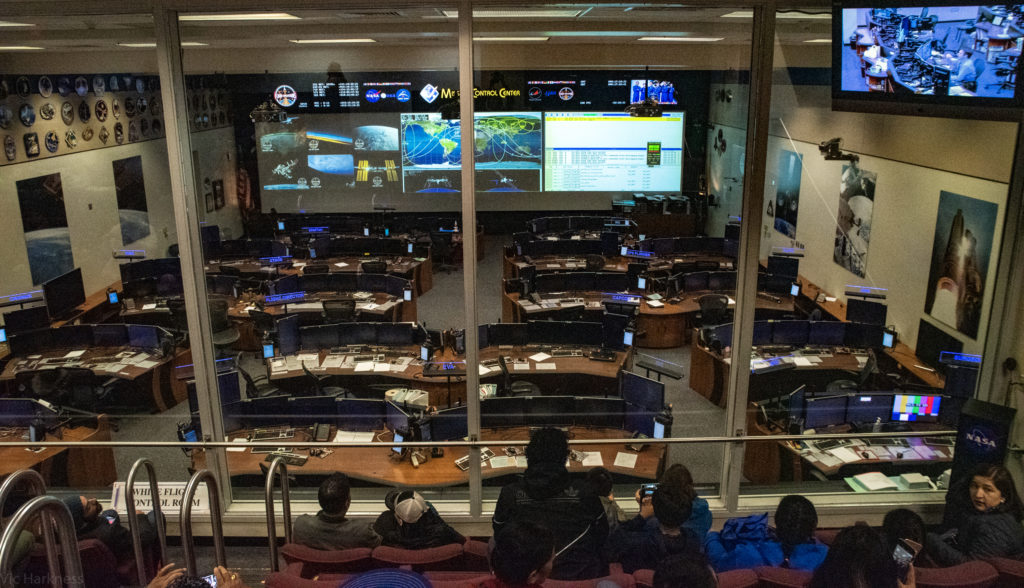
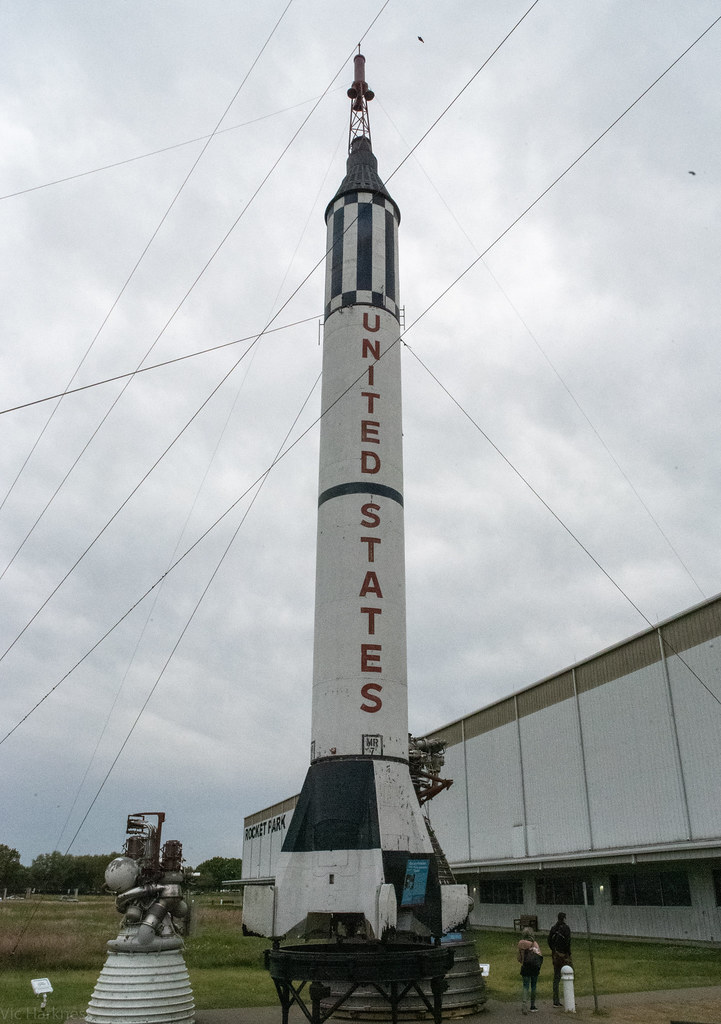
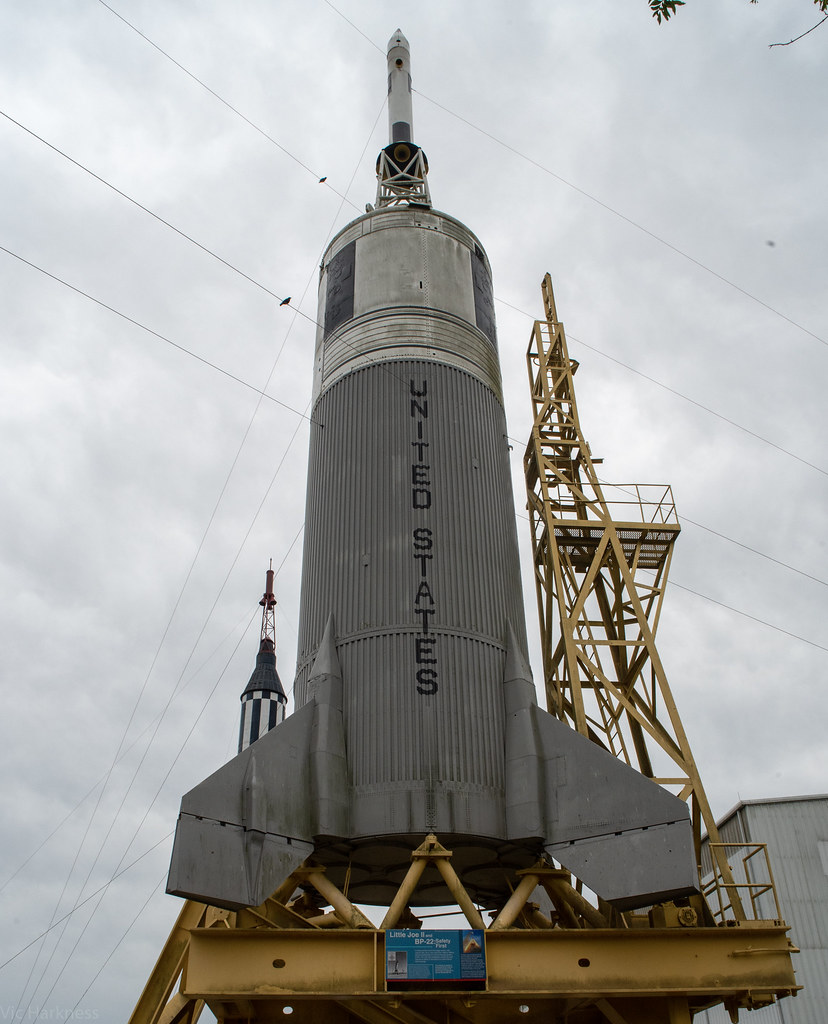
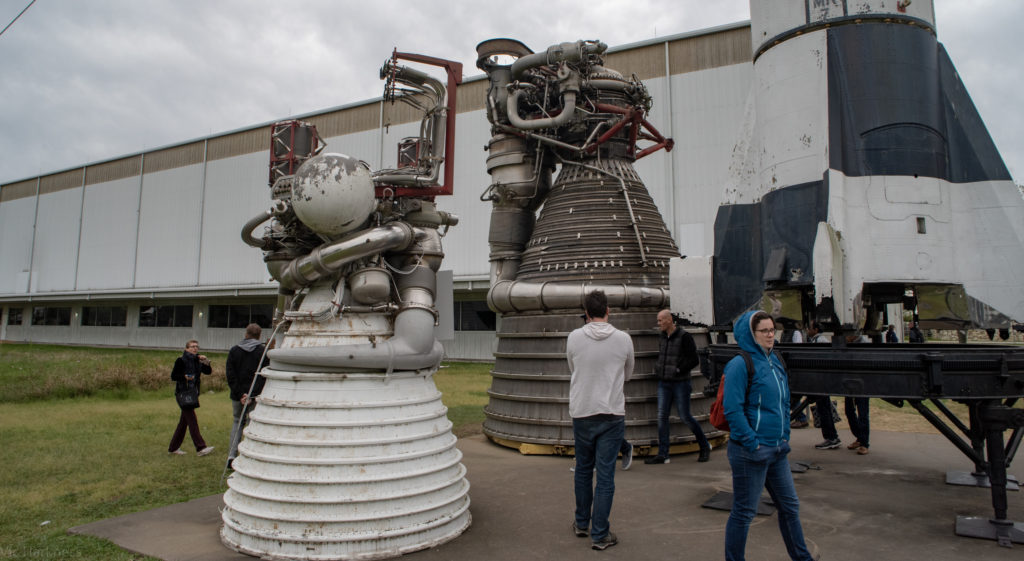


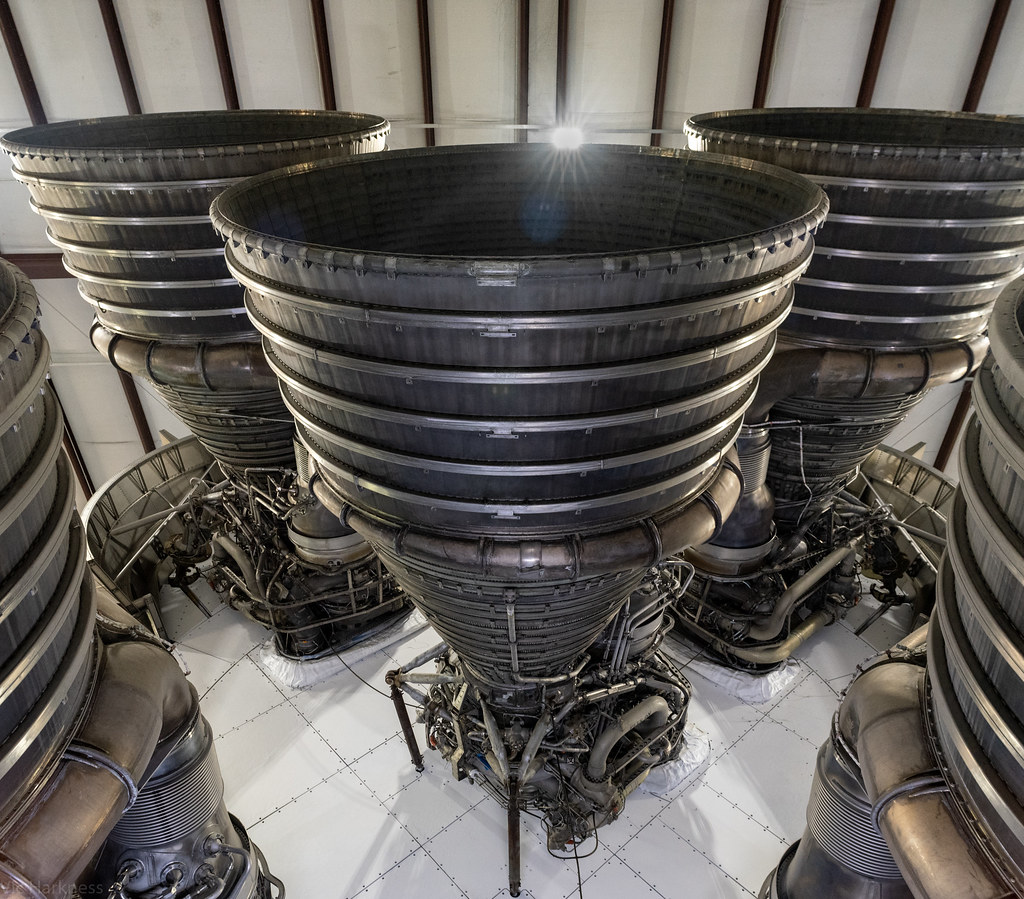
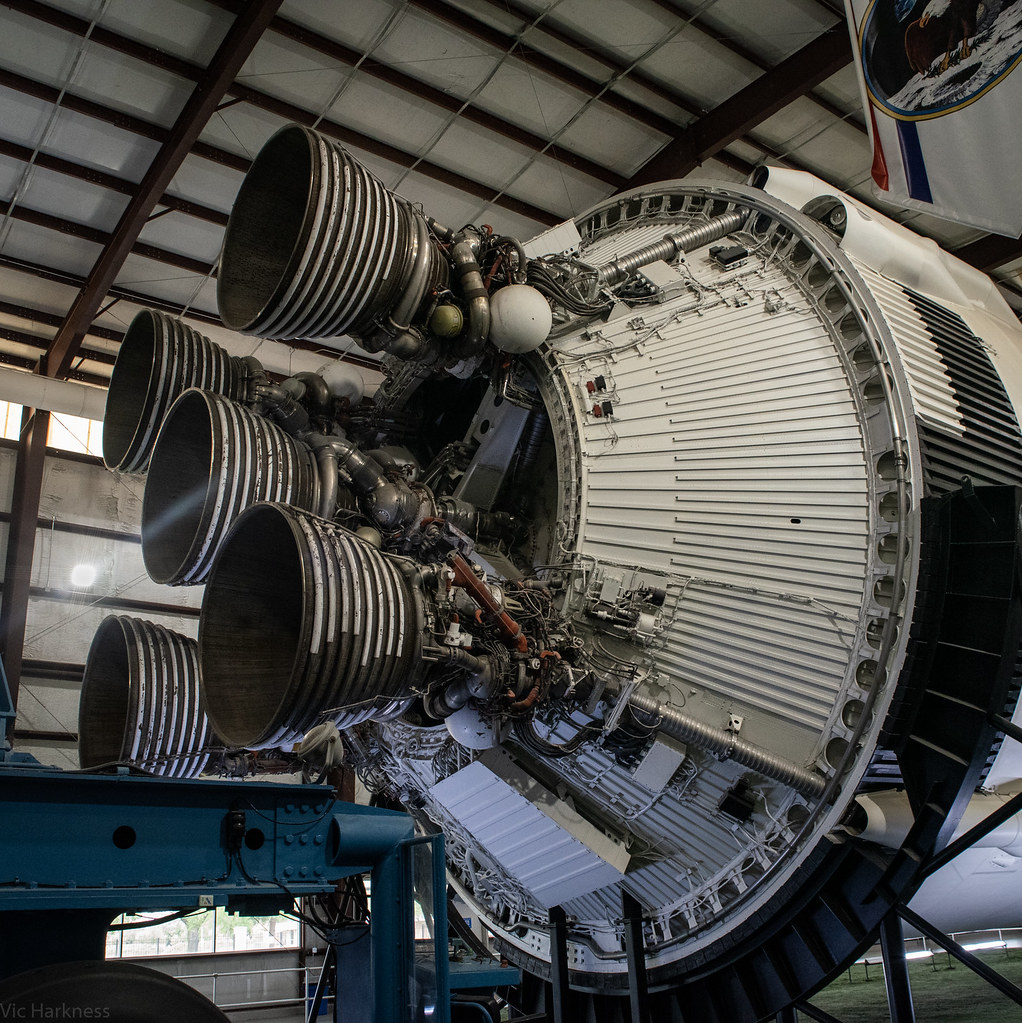


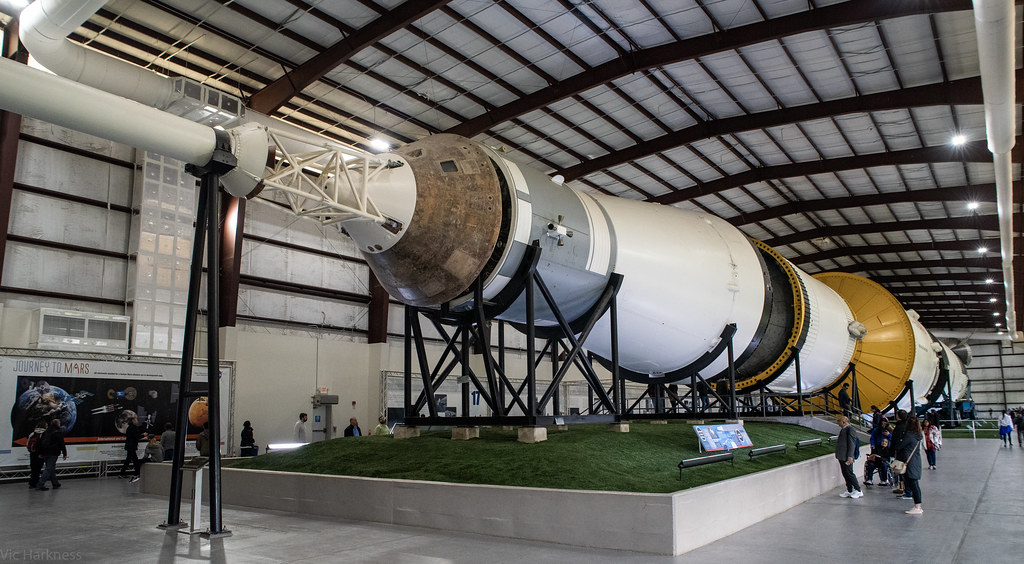

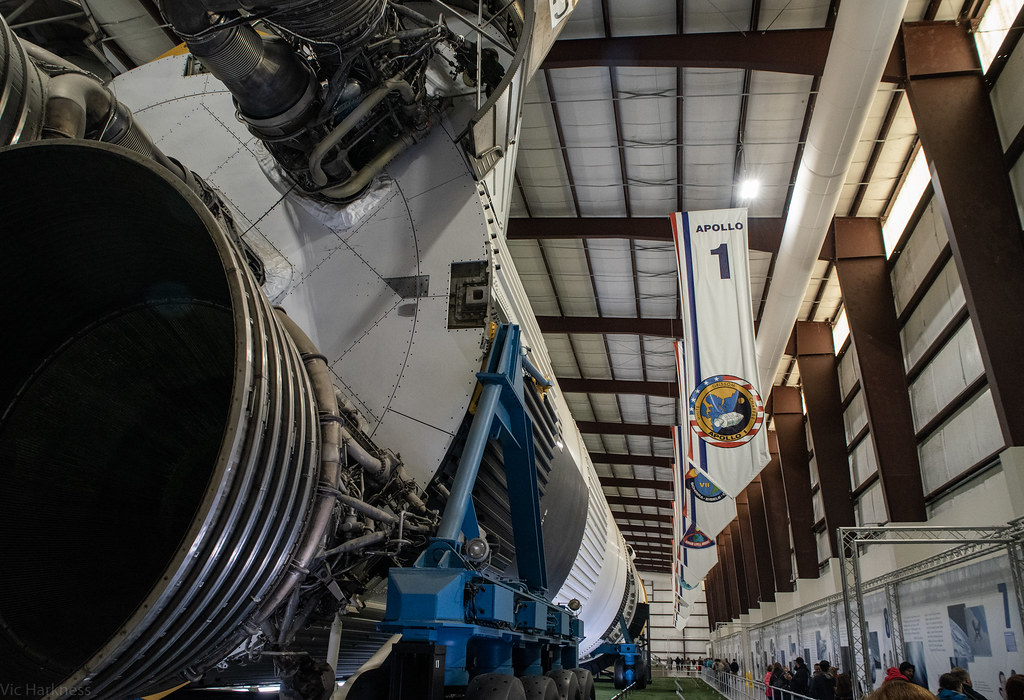

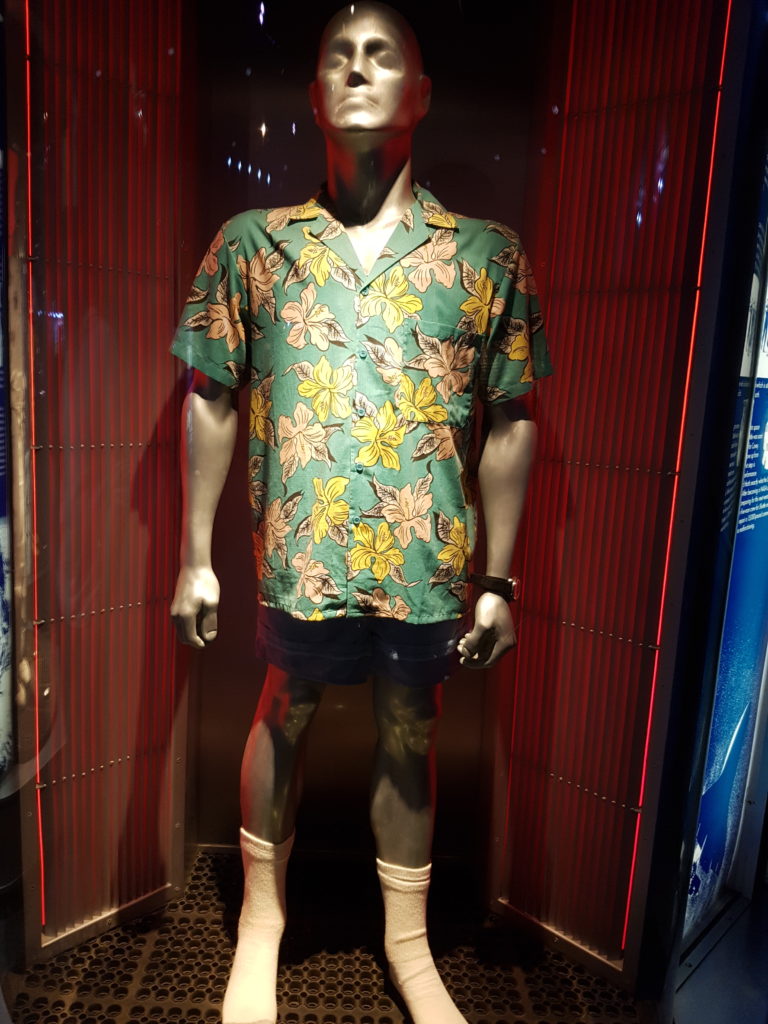
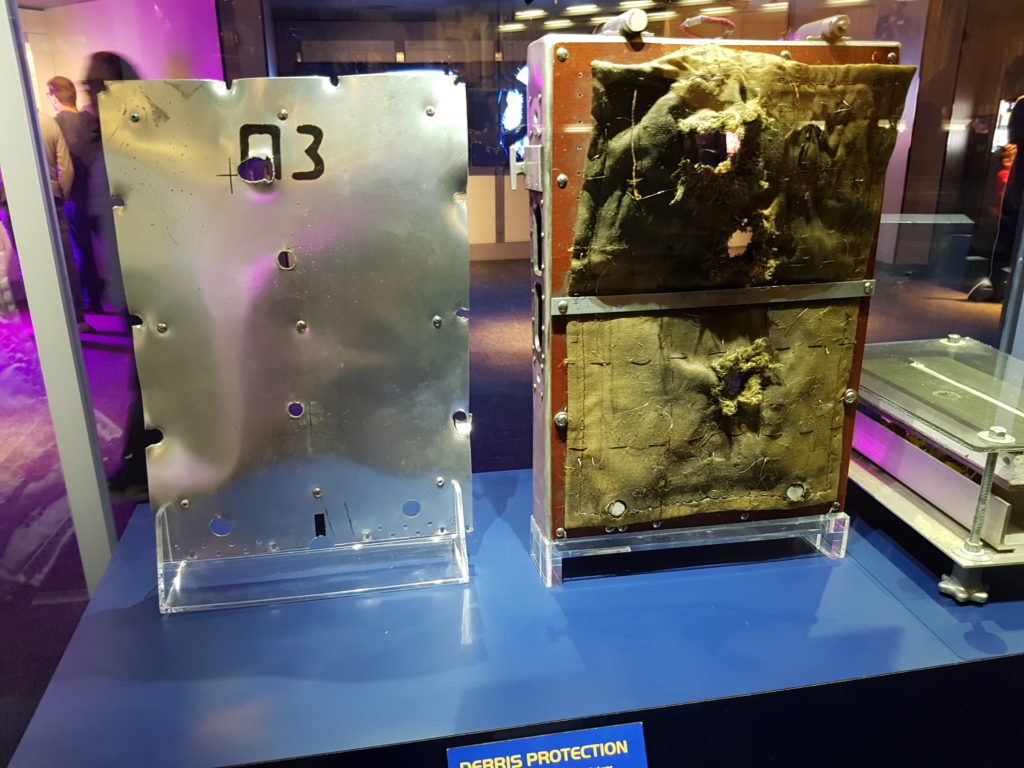
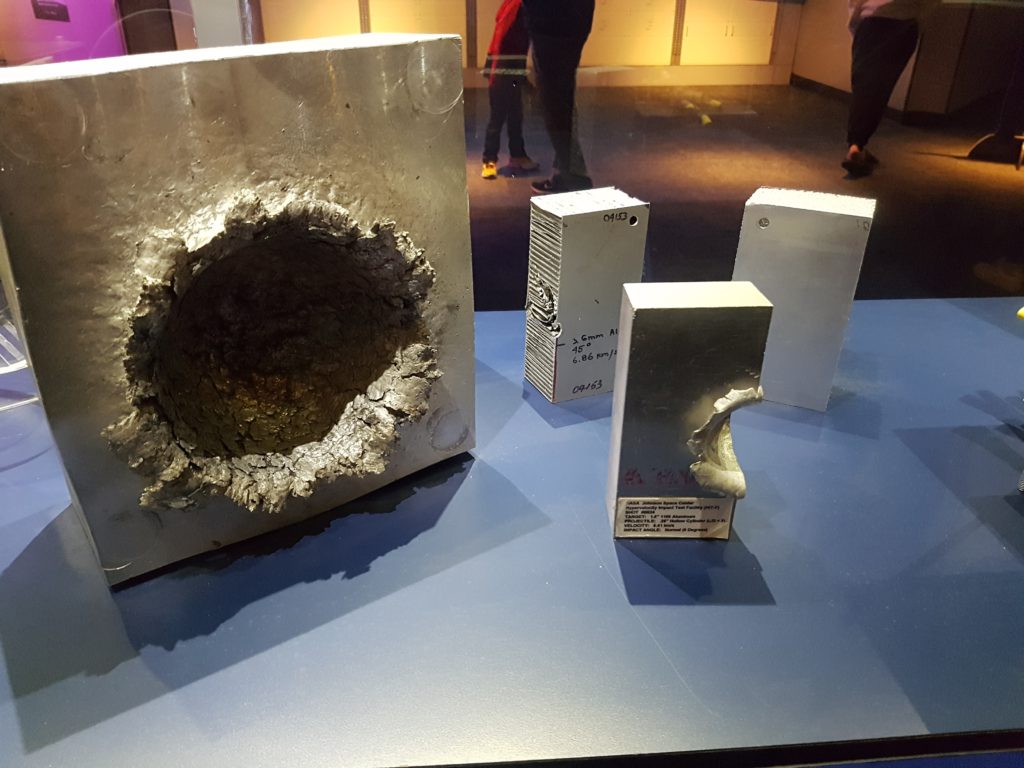
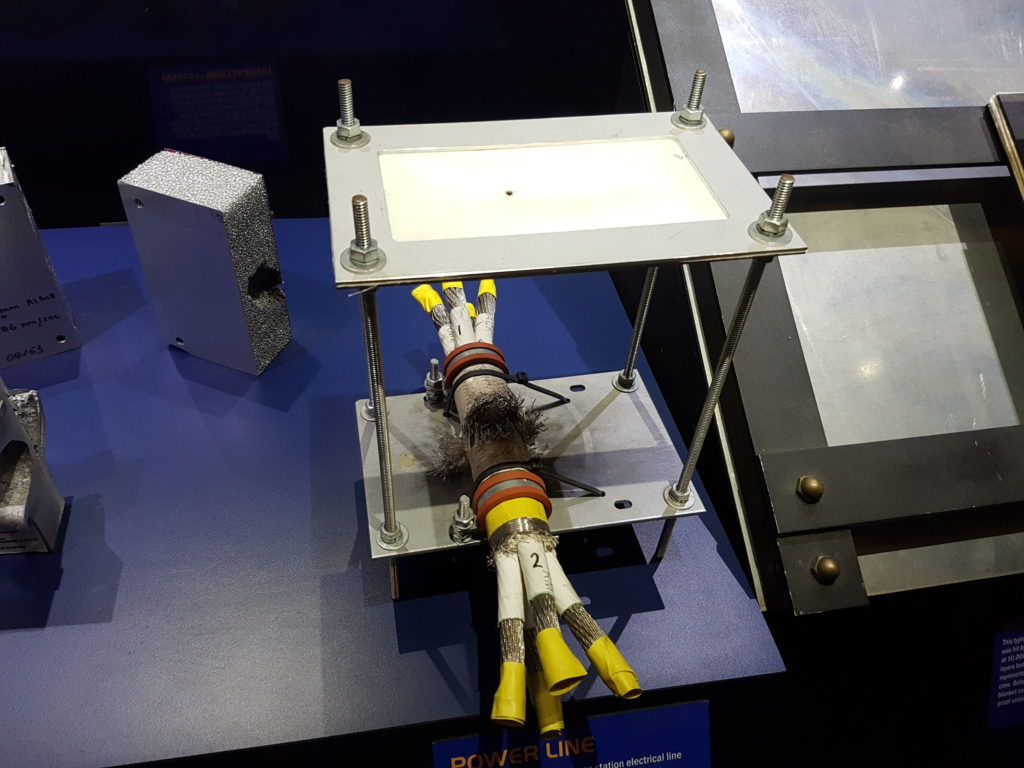
Be First to Comment